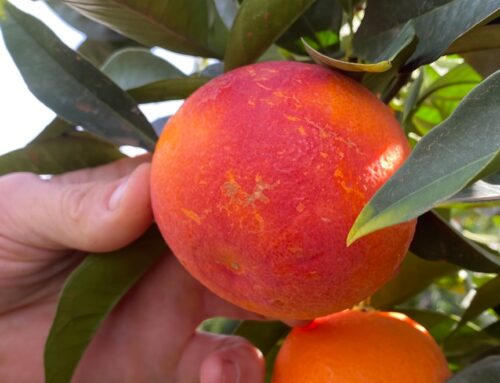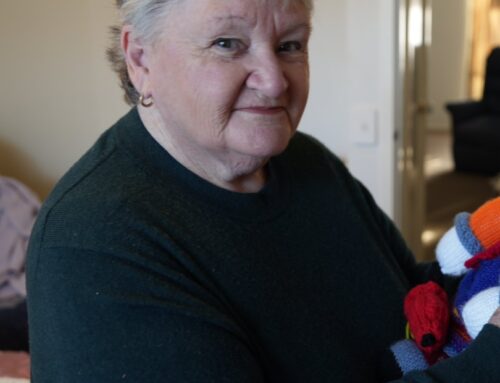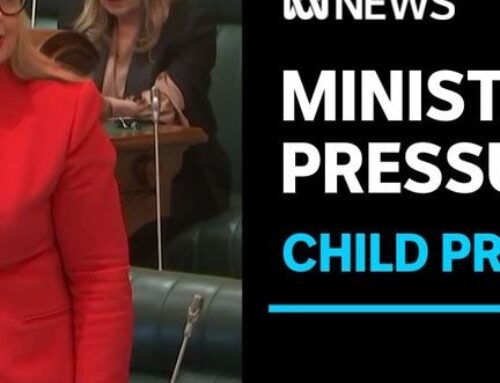Before Jackson Cass, 27, was organising citizen science projects and monitoring koalas in western Victoria, he was working in construction with his father.
“The environment was something I was always interested in and passionate about, but I didn’t really understand how I could get involved in that space,” he says.
So he left construction and started studying a diploma in conservation and ecosystems management at uni.
“From there I started doing a lot of volunteering with some local landcare groups,” Mr Cass, who has now been the coordinator of the Moorabool Catchment Landcare Group for almost four years, says.
“I think it’s a valuable thing to contribute, and being a younger person, it’s good to have young people represented in that space as well.”
Mr Cass is one of hundreds of citizen scientists collecting information on koala populations across Australia as part of a national koala monitoring program.
The monitoring program is led by quantitative biologist and CSIRO senior research scientist Andrew Hoskins, who says koalas can be “quite cryptic” as they sit quietly high up in trees, particularly during the day.
“Everybody knows what a koala looks like — they’re really easy to identify, but they’re really hard to spot,” Dr Hoskins says.
“This makes monitoring them even harder.”
So the more eyes out looking for them, the better.
Dr Hoskins says it is the first time citizen science has been used Australia wide to collect data on koala numbers, habitat and health.
“It’s super exciting to work on a national-scale program that allows people to provide information in a useful and usable way that then we as scientists can make best use of to inform conservation of such an iconic species,” he says.
“[Working with citizen scientists] is efficient and it’s also really inclusive because it lets anybody access and contribute information to the program in a meaningful way.”
What do latest data tell us about koala populations?
Koalas (Phascolarctos cinereus) typically live in eucalyptus forests along southeastern and eastern Australia.
Historical data suggests that national koala populations “have declined quite severely in recent years”, Dr Hoskins says.
With only two years of data in the program, he says it is still too early to determine if the koala populations are continuing to decline or have stabilised.
“What we are still working out is: how many were there to begin with? And how many do we have now?” Dr Hoskins says.
“We don’t have enough points through time to really give a good estimate at that national scale of trend yet … [but] we are confident that we will get there.”
The most at-risk populations — those considered “vulnerable” and protected under national environment law — are in parts of Queensland, New South Wales, and the Australian Capital Territory. As of March 2024, the estimated size of these endangered populations was between 95,000 and 238,000 animals.
Koalas in Victoria and South Australia, on the other hand, are not considered endangered and are even over-abundant in some areas, with their populations estimated between 129,000 and 286,000 animals.
Dr Hoskins says habitat loss is a significant contributor behind koala declines at a national level, as is the bacterial infection that causes chlamydia.
“Whether it be by bushfires, or whether it be by land clearing, or urban expansion, which is another habitat loss challenge,” he says.
“Chlamydiosis is widespread and extensive throughout the koala population, and can cause quite severe reproductive issues, particularly with female koalas.”
Data back up local stories
Before koala monitoring started in the Moorabool region, Mr Cass says there had been a general chatter about declining numbers, “but it was all anecdotal”.
Older farmers told him stories about koalas walking through their paddocks, while bush residents spoke about hearing koalas calling throughout the summer, but they hadn’t seen or heard the animals in years.
But Mr Cass says hard data on local koala numbers was “lacking”, which meant there wasn’t “anything to back those claims up as correct as they may be”.
So the landcare group decided to make monitoring a priority and signed up to the national program.
“We had a really terrific response for the community to come out and help collect some more data on koalas,” Mr Cass says.
“There’s definitely been a growing interest from landholders to be engaged in citizen science activities over the past 10 years.”
The Moorabool landcare group also works closely with members of the Wadawurrung Traditional Owners Aboriginal Corporation, such as biodiversity project officer Kelly Ann Blake to monitor ngaambulmum (koala).
“The translation of ngaambulmum actually means ‘rump in fork of tree’, or ‘bottom in fork of tree’, which makes perfect sense because you’re looking at a big fluffy backside in the tree,” she explains.
Ms Blake says it is imperative First Nations voices and perspectives are taken seriously, adding that by doing so, this also provides a deeper understanding of the animals.
“We use a two-way learning approach where we encourage everyone to learn from Country and listen to what Country is teaching us,” she says.
“We use all of our senses: looking, listening, smelling and feeling. We will use our past and current knowledge of koalas to see where they are and if they are healthy.”
While Victoria overall has many koalas, Mr Cass says monitoring over the past two years backs up stories of declining numbers in some parts of the Moorabool area.
Only two koalas were spotted across 39 monitoring sites this year following a total of three koala sightings in 2023.
He says habitat loss and climate change are probably the biggest two impacts on local koala populations in the area.
How does koala monitoring work?
The monitoring program has a network of sites that have been “carefully selected and chosen throughout the landscape” to reflect the koalas’ range, Dr Hoskins says.
He says a common challenge scientists face when monitoring a species such as the koala is: “How much of you not seeing a species in an area has to do with the fact that the species isn’t there, or that you haven’t just been able to see it?”
Scratch marks on a tree or koala droppings are some of the visual indicators used by citizen scientists to assess whether a koala may be nearby.
If it wasn’t for this citizen science project with the Moorabool community and CSIRO, Mr Cass says he wouldn’t know as much as he does now about koalas, including the best ways to monitor them.
One of the more “scientifically rigorous” methods is a double line transect, a type of systematic survey used to estimate the population size of a species, or to detect changes in that size over time.
This involves two people starting at opposite ends of a mapped-out line or path through a section of habitat and walking from one end to the other as they search for koalas.
Since late 2021, Mr Cass has conducted more than 70 koala surveys in the Moorabool region, but has only seen five koalas in total.
“Koalas are very tricky things to spot in a tree when you have looked at a thousand trees that day.
“There’s many times where I haven’t spotted something and somebody else has.”
The citizen science observations are combined with other methods such as koala detection dogs and drones, which help locate and map out the presence of koalas in an area.
How can I get involved?
Dr Hoskins encourages anyone who wants to undertake systematic surveys to get in contact with the program, and check out the NKMP website for guidelines and information sessions.
Around 618 citizen scientists have directly engaged with the koala monitoring program so far, which includes local communities, vets and wildlife carers, and First Nations people.
The CSIRO has also released an app called Koala Counter designed for citizen scientists to record survey data.
“They might want to collect koala information in a way that we as scientists also collect that information, which helps us get better information to understand how many koalas there are, not just where koalas are,” Dr Hoskins says.
But you don’t need to do a survey to help.
Other apps, such as Koala Spotter and iNaturalist, feed into the CSIRO project too. They’re set up for citizen scientists who may be out on a walk and want to record a koala sighting, or collect information about koala health.
“We’ve been working closely with the University of Sunshine Coast who have developed Bluetooth ear tags for koalas,” Dr Hoskins says.
The tags can identify individual koalas in some areas via the Koala Spotter app, and allow community members to develop a personal relationship with their local koalas, as well as learn about some of the issues facing koalas in their area.
“You’ll get its name, how old it is. If it potentially encountered humans — why did it get caught? Did it end up in veterinary care? Did it get hit by a car?” Dr Hoskins says.
The monitoring program is also systematically collecting information about other species that people may encounter when spotting koalas. One is the endangered greater glider.
“Greater gliders are quite topical at the moment as well, and interestingly, they occupy very similar regions to koalas,” Dr Hoskins says.
“We’ve been joking that it’s not just the national koala monitoring program — it’s also the national greater glider monitoring program.”
Get all the latest science stories from across the ABC.





